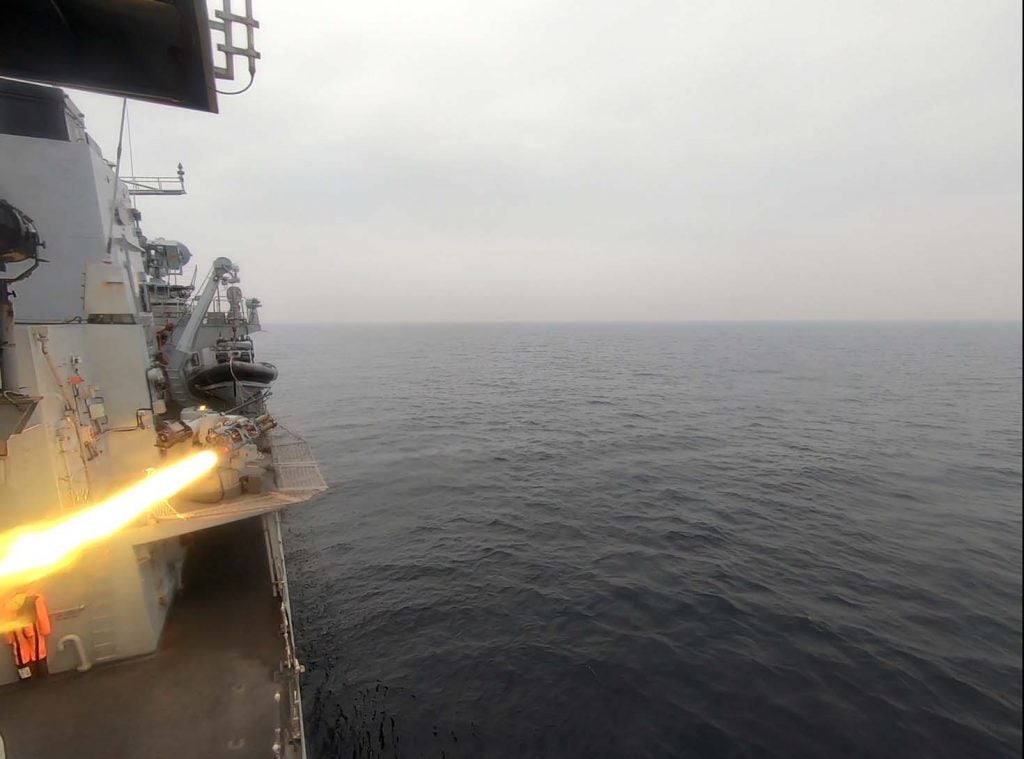Royal Navy Conducts Tests of New Lightweight Multi-role Missile
The Royal Navy has recently conducted a series of tests for the Lightweight Multi-role Missile, also known as the Martlet. Tracing a design lineage from the Javelin, Starburst, and Starstreak Man Portable Air Defense missiles, the Martlet has demonstrated the ability to engage both surface and air targets. The new missile will likely enter full service soon, but no date has been set.
Martlet is truly a multi-role missile, being capable of being fired from the shoulder, from Royal Navy helicopters, and now from a side mount on a remotely operated 30mm cannon on the Type 23 frigate HMS Sutherland. The Martlet is guided by laser beam until it reaches a terminal phase, where a radar proximity fuse takes over, detonating the missile at the optimal point.

The new missile was first proven by the Royal Marines air defense troops of 30 Commando. They engaged Banshee target drones with both shoulder and pedestal fired Martlets, conducting eighteen successful engagements against the small targets. The commanding officer of the Air Defense Troop, Captain James O’Rourke, was optimistic about the missile’s future service with the Royal Marines, “I think in the future we’ll be attached to close combat rifle companies, pushing forward and potentially targeting Unmanned Aerial Systems and Unmanned Aerial Vehicles in the skies as opposed to sticking with fixed wing rotary targets”.
Just under two weeks after the Marines demonstrated the missile’s effectiveness against small aerial targets, manufacturer Thales installed a quintuple-mount on one of HMS Sutherland’s 30mm cannon mounts. During the exercise, the ship first fired off over a hundred 30mm rounds at a “killer tomato” inflatable target to see if the recoil and vibration of the gun might damage the missile mountings. Once the firing of the gun was complete, the ship fired four Martlets. The first was to determine if the launch of the missile would cause any problems with the mounting, and the following three were live launches to test the coupling.

Commander of HMS Sutherland, Commander Tom Weaver, was just as enthusiastic about the test as his Royal Marines counterpart, saying “The impressive result of this trial was achieved through the hard work and cooperation of a wide array of industry and defence partners and it was rewarding for Sutherland to have played such a key role in its success”.
It has been suggested in the recent days since the test that this may become standard fit for Royal Navy warships, expanding their self-defense capabilities not just against aircraft, but against small boats as well. The remotely operated 30mm guns are a reliable, cost-efficient counter to small numbers of incoming small boats, but lacks the range to engage larger swarms effectively. The addition of the LMM pushes the reach of a ship’s point defense against surface targets out to some five kilometers.
It remains to be seen when and how Martlet will be acquired and integrated into the Royal Navy, but the future looks bright for Thales’ newest small missile.

